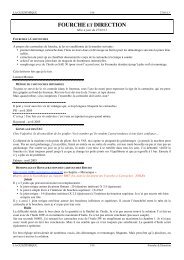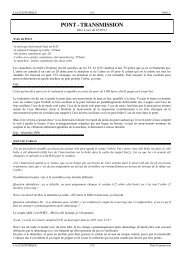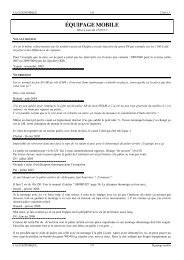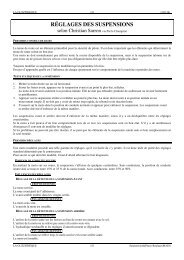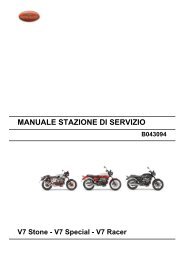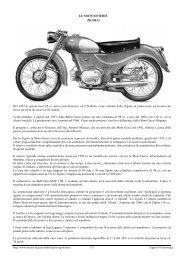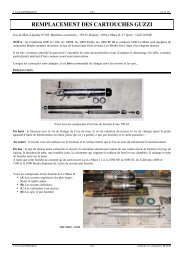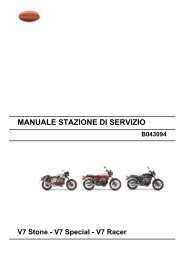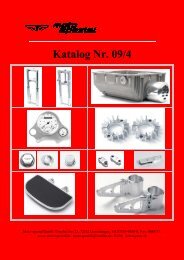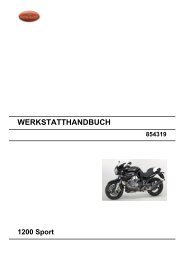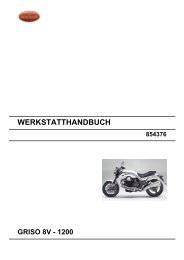Carburateurs Dell'Orto - Guide technique
Carburateurs Dell'Orto - Guide technique
Carburateurs Dell'Orto - Guide technique
You also want an ePaper? Increase the reach of your titles
YUMPU automatically turns print PDFs into web optimized ePapers that Google loves.
LA GUZZITHÈQUE 3/21 19/03/04<br />
1 FUNCTIONS OF THE CARBURETTOR<br />
The main carburettor functions are:<br />
• To form a proper homogeneous inflammable mixture of fuel and air<br />
• To supply the engine with varying amounts of this mixture<br />
The fuel-air mixture is formed through vapourising and by uniformly spraying fuel into the airstream or at least by atomising it<br />
into very small droplets.<br />
Atomisation takes place in this way: liquid fuel from the atomiser nozzle meets the flow of air which carries it, broken into<br />
very fine droplets, to the combustion chamber.<br />
We have spoken of a "proper" mixture because the mixture strength, defined as the amount of air in weight mixed with a fuel<br />
unit of weight, must have a precise value,ie it must be within the limits of inflammability so that the mixture can be easily<br />
ignited by the spark in the combustion chamber.<br />
lnflammmability limits for commercial petrol are: 7:1 (rich limit ie. 7 kgs of air and 1 kg of petrol), down to 20:1 (lean limit ie.<br />
20 kgs of air and 1 kg of petrol).<br />
To obtain optimum combustion between these inflammability limits, a value very close to the so-called stoiciometric value is<br />
needed ie. about 14.5 - 15.0 kgs of air to 1 kg of petrol.<br />
A stoiciometric mixture ratio is one which ensures complete combustion of fuel with only the formation of water and carbon<br />
dioxide.<br />
The stoiciometric mixture ratio depends on the kind of fuel used, so if the fuel is changed, this fuel-air ratio will also change<br />
(see SECTION 5.1).<br />
The selection of the fuel-air ratio is therefore very important both for engine performance and for exhaust emission levels.<br />
The throttle valve (usually a flat or piston-type gate valve, also called a slide) is the main part by which the engine is tuned ie.<br />
the engine power output is varied by controlling the amount of mixture being drawn into the cylinder.<br />
During bench tests,the engine is usually run in top gear in two characteristic conditions: full throttle and part throttle.<br />
The full throttle test simulates conditions for a vehicle on a progressive climb with the throttle wide open.<br />
In the bench test, this condition is reproduced by running the engine with the throttle fully open; from this maximum<br />
horsepower condition, the engine is braked at various speeds and the specific power and consumption figures are taken.<br />
On the test bench, this condition is simulated by running the engine again from the maximum engine power conditions, but<br />
progressively closing the throttle valve of the carburettor.<br />
At various speeds, specific power and consumption figures are taken again.<br />
The part throttle test simulates the conditions for vehicle on a level road at varying speeds.<br />
LA GUZZITHÈQUE 3/21 Dellorto Tuning <strong>Guide</strong>





